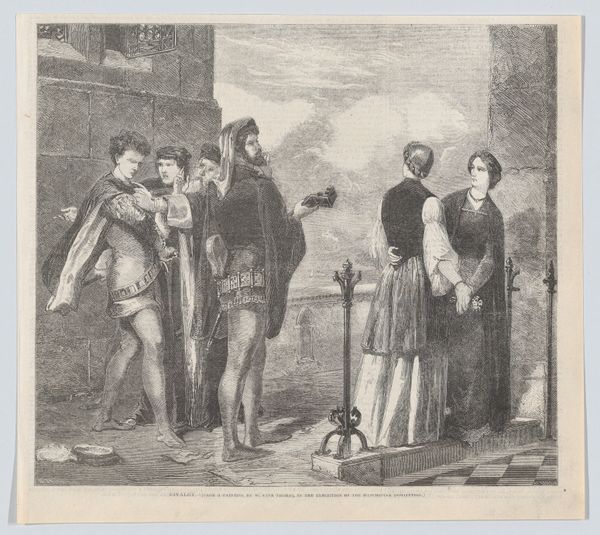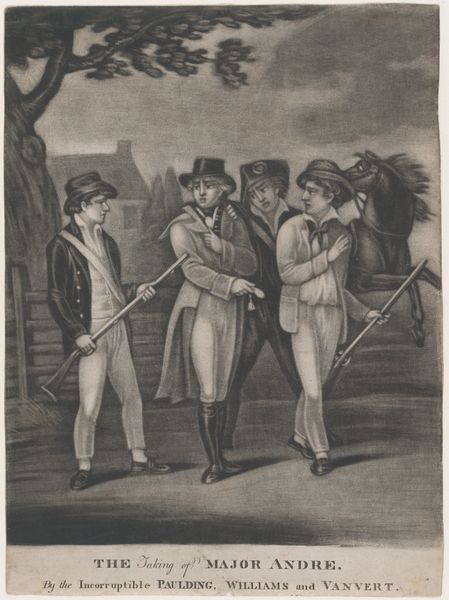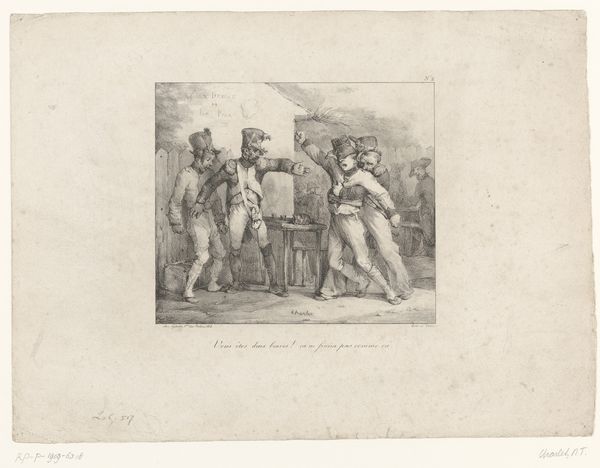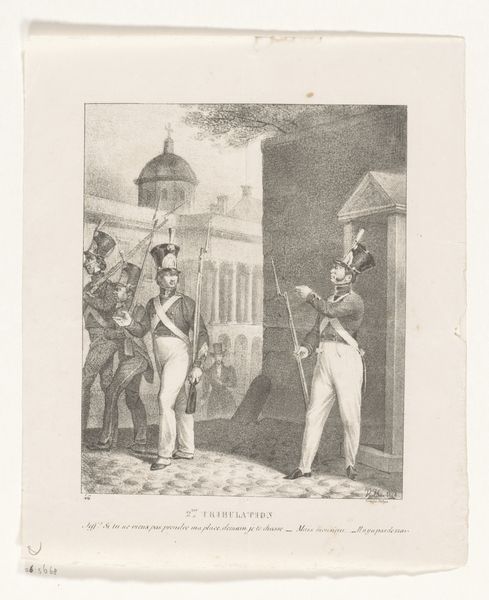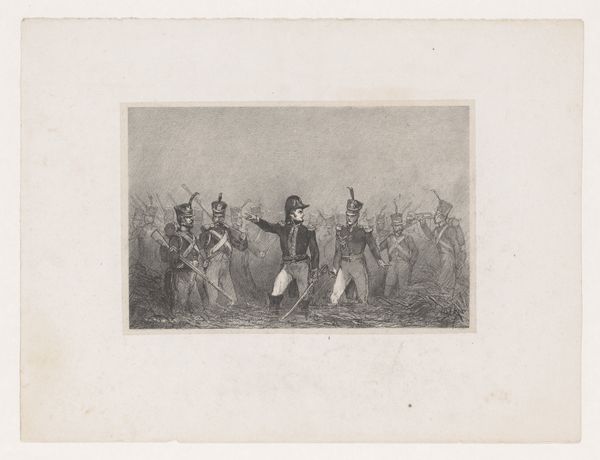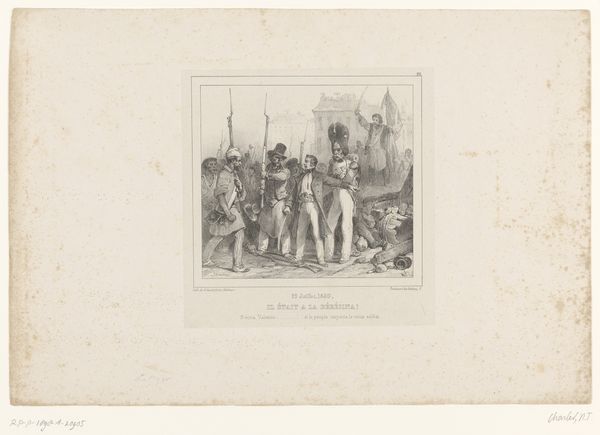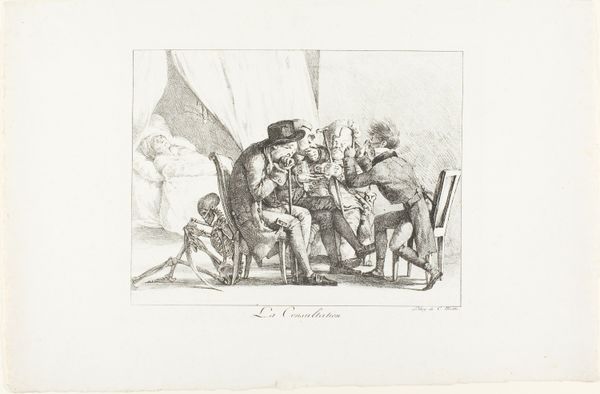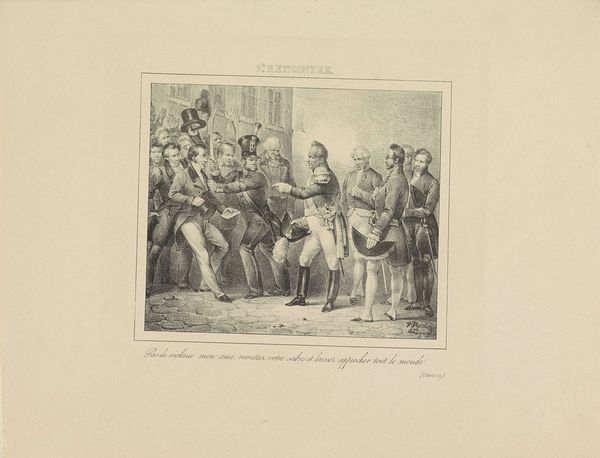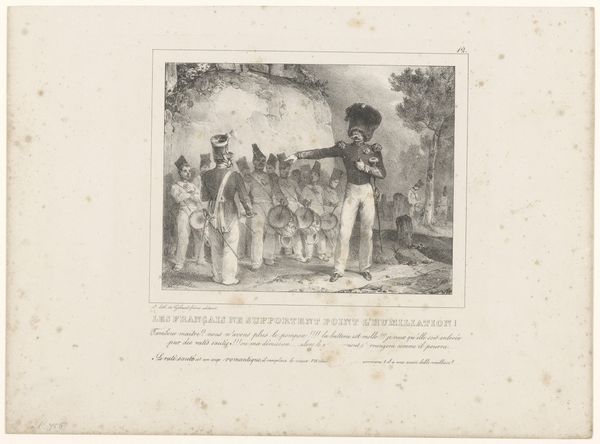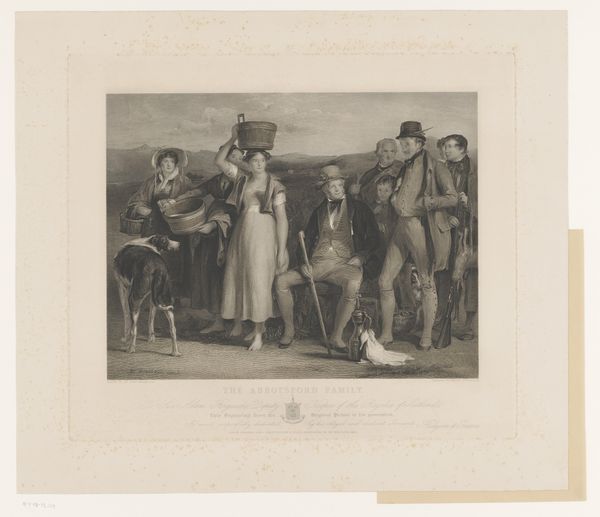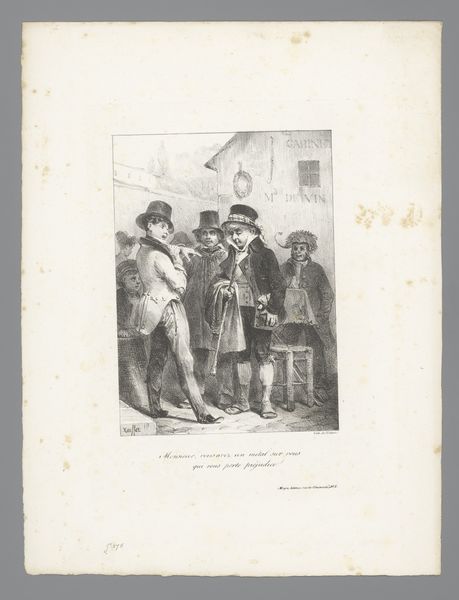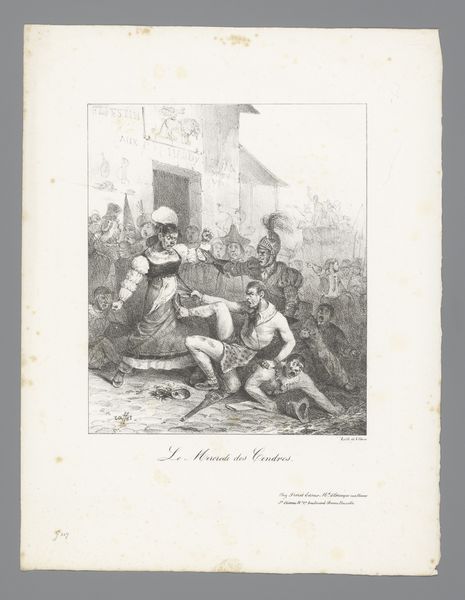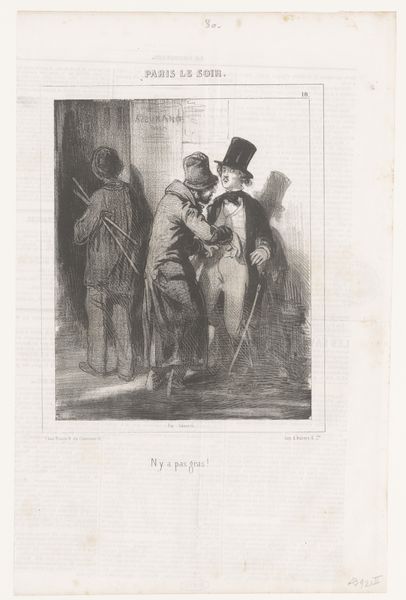
Jongeman wordt opgepakt door een patrouille van de Nationale Garde 1838
0:00
0:00
paulgavarni
Rijksmuseum
lithograph, print
#
16_19th-century
#
lithograph
# print
#
caricature
#
romanticism
#
19th century
#
genre-painting
Dimensions: height 285 mm, width 229 mm
Copyright: Rijks Museum: Open Domain
Editor: Here we have Paul Gavarni's lithograph from 1838, "Young Man Arrested by a Patrol of the National Guard." The chaotic cross-hatching gives a frenetic energy to the scene, a real sense of drama. What formal qualities stand out to you? Curator: The lithograph presents a compelling study in contrasts. Note the rigid, almost geometric forms of the soldiers' hats and the severe lines of their rifles. These are juxtaposed against the more fluid and rounded figure of the young man. How does that formal contrast speak to the larger narrative? Editor: It highlights the power dynamic, right? The rigid lines represent order and authority, while the young man's curves suggest vulnerability and perhaps even resistance, despite being restrained. But I'm interested in the repeated use of line—hatching and cross-hatching give it this bustling effect. What does it do? Curator: Precisely. Gavarni’s mastery of line is paramount. The density of the lines creates areas of deep shadow, particularly around the figures, effectively compressing the pictorial space and heightening the sense of immediacy. But consider the areas of relative lightness: they guide the eye, emphasizing certain details. Editor: So, the lighter areas draw us to key narrative details? The young man’s face, for example. I also see how the artist contrasts light and dark to almost sculpt the figures with stark shadows, lending a sense of drama and immediacy to the print. It's more than just illustration; it’s commentary through form. Curator: Precisely. It is the careful modulation of tonal values, the calculated distribution of visual weight that truly elevates the print. I think Gavarni creates commentary on power and oppression not merely through subject, but, cleverly, through design. What did you think? Editor: This really shed light on Gavarni’s formal skill – seeing the commentary embedded within the composition itself. It certainly has offered me an enriching understanding.
Comments
No comments
Be the first to comment and join the conversation on the ultimate creative platform.
